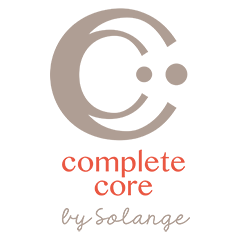It is very common during pregnancy to experience lower back pain or shooting pain in the butt. As the joints and ligaments stretch in the pelvis to accommodate the growing baby, there is increased stress on the musculature and internal pelvic structures. If muscles become too tight they can cause stress on these structures. A major culprit in causing pain is the sciatic nerve. The nerve travels underneath the piriformis muscle. Tightness in this muscle or changes in the alignment of the pelvis can cause compression of the sciatic nerve. Symptoms can vary from shooting pain in the butt, radiating pain down the back of the thigh, dull ache in the lower back, or tingling and numbness in any of these areas.
So how do we get rid of the pain?
The first step is to relax. It is human nature to focus on a pain and keep testing if it is there. This will surely make any pain in the body worse. Second, we must strengthen the core to support and protect the internal structures. We stretch muscles that are tight and strengthen muscles that are weak. And lastly, we must not forget the importance of posture and alignment in daily activities and positional changes.
A few simple exercises that can help manage the pain are the following:
To start put your body in good postural alignment by adjusting from the ground up.
- Stand with your feet hip distance apart, with the weight distributed evenly between the ball and heel of the foot.
- Gently engage the glutes and lower abdominals to decrease the arch of the lower back.
- Slowly draw the shoulder blades back and down while keeping the connection to the abdominals.
- Keep your gaze soft at eye level.
- Let your arms relax by your side.
- This should also be practiced in sitting on a regular chair or the physioball.
- Belly Brace
Inhale breathing into the belly and ribcage. On the exhalation, draw your navel in towards the spine. Hold for 2-3 seconds and then relax. Repeat 10 times. Feel how your abdominal muscles support the spine and take pressure off of the lower back and pelvis. Try to visualize the abdominals corseting around your waist and connecting to the spine. - Piriformis stretch
Lay on your back bending one knee in towards your chest. Slowly draw the knee across the body towards the opposite shoulder. Hold for 30 seconds. - Side stretch
Start standing with the feet together. Step one foot back about 2-3 feet staggered behind the front foot. Stretch the same arm up as the back leg and bend to the side. Hold for 30 seconds. - Side Leg Raise
Lay on your side with the bottom leg bent, top leg straight. Align the top leg with your body to make a straight line. Lift the top leg up, keeping the leg stretching long, hold for 2 seconds and lower slowly. Before the leg touches the ground, lift up again. Repeat 10-15 times. - Avoid shifting to one side when sitting, standing, and during daily activities.
- Incorporate the Belly Brace into daily activities of bending, lifting, and exertion so your core can support you throughout the day.
Piriformis Stretch (Le Claire Photography)
Piriformis Stretch (Le Claire Photography)
Side Stretch (Le Claire Photography)
Side Leg Raise (Le Claire Photography)
Strengthening, stretching and keeping your body in good postural alignment will help to protect the sciatic nerve from compression and help alleviate painful muscles.
Remember to always consult with your doctor before beginning any exercise program. If you feel more pain while performing any of these exercises you should stop to prevent injury. This program is not intended as an alternative to seeking medical treatment.





